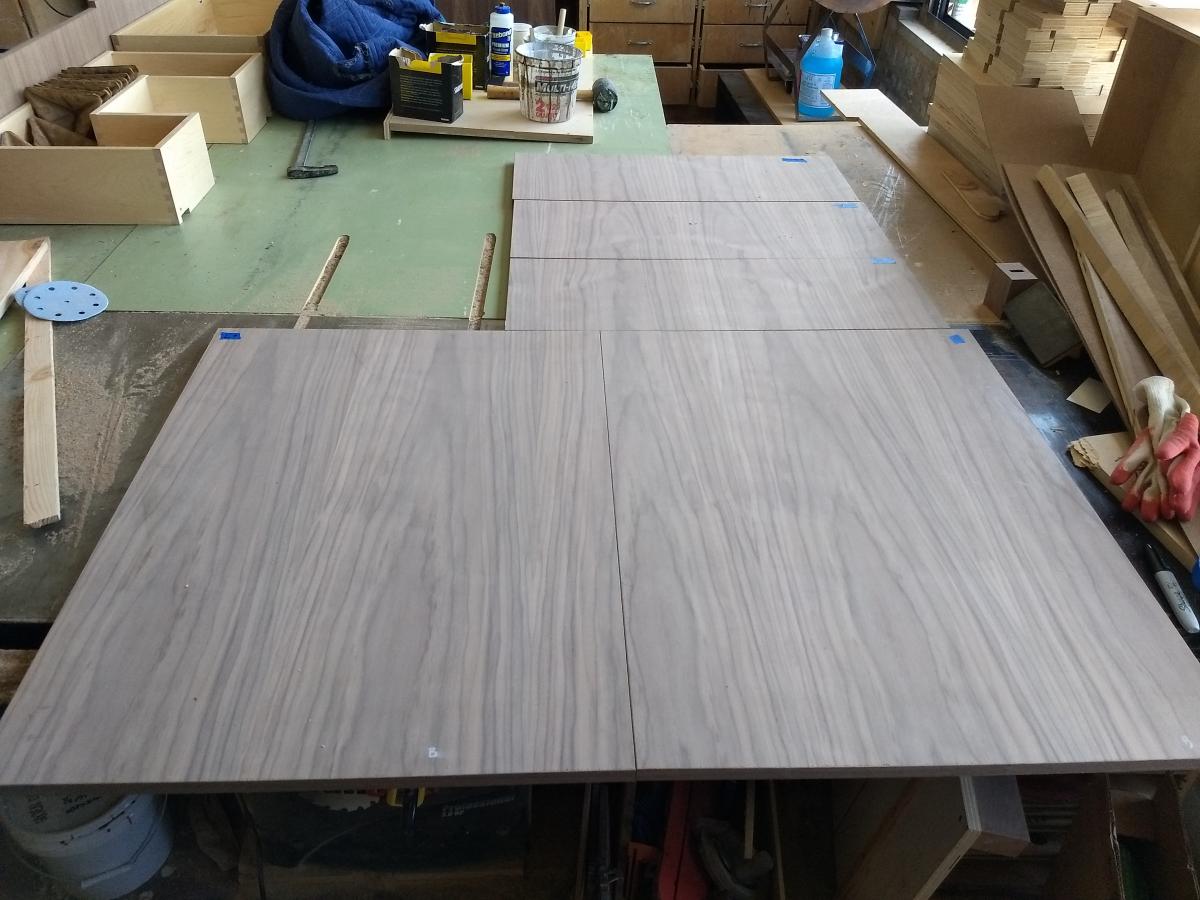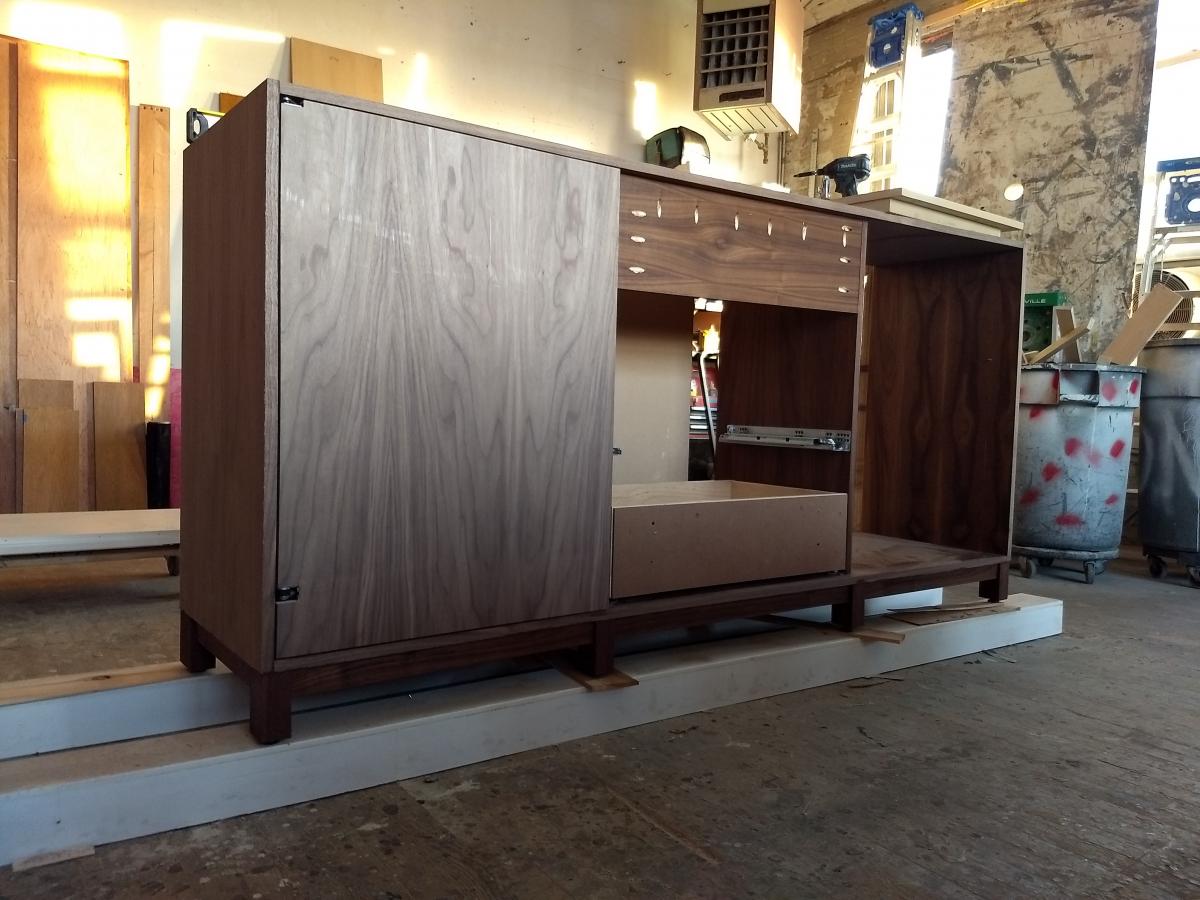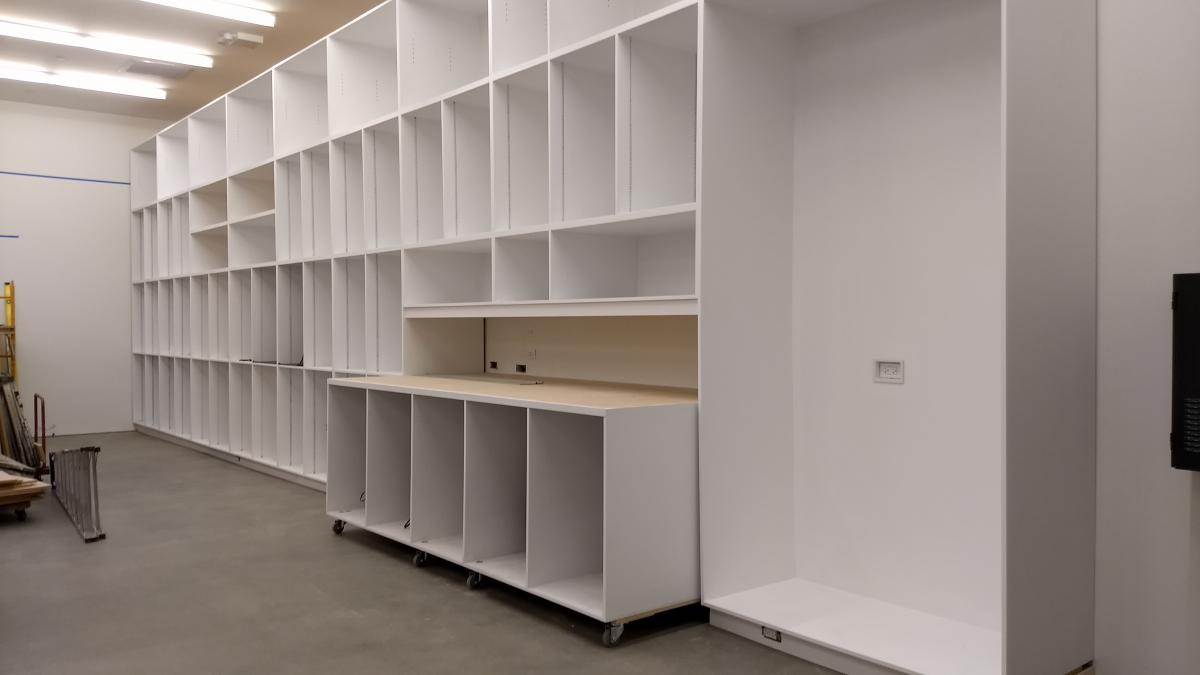
Click here for Part 1 - Introduction
Click here for Part 2 - Goals
Click here for Part 3 - Information
Click here for Part 4 - What Can a Newbie Build
I think it is fair to say that most furniture is made of solid wood or sheet goods - the latter being plywood, melamine, or MDF, depending on budget and design considerations. As discussed in the last blog, cutting sheets goods accurately and with a clean, ready-to-glue edge isn't trivial, and it's a real roadblock for a lot of beginners who are just trying to build their first pieces of useful furniture.
The obvious solution is to use a table saw, panel saw, or a portable saw and rail system like the Festool TS55. The first method requires a large amount of free floor space - eight feet on each side of the saw. The second method requires eight or nine running feet along a wall. The last method requires saw horses, and at least ten or so clear feet to set up the saw and have a little room to work on a full sized (8') panel. All of these methods require an initial capital expense of $600 and up and some training (not much).
I don't think any hand tool can cut a clean edge in plywood, so I don't think that's practical for any except very rough work.
Professional cabinetmakers in New York City have similar problems. Space is at a premium, and while having a table saw is pretty important for some of the work, breaking down panels to exact size can be slow, and errors are expensive. Noah Grossman, a cabinetmaker located in Brooklyn, applies a solution to the problem that is becoming more and more popular among professional woodworkers.

The walnut plywood panels above are part of a sideboard Noah designed and built, but instead of cutting all the material in his own shop (which he certainly has the capacity to do), Noah found it was easier and cheaper to outsource the cutting up of the panels to a CNC shop.
All across the country, CNC shops offer exact dimension cutting of sheet goods usually for a fixed cost over material cost. CNC shops can cut, rebate, drill, form splines for joinery, drill for hinges, and perform many other operations. Unlike a small shop with a basic CNC router, the best of these shops have sophisticated materials-handling equipment and automatic tool changers for flexibility. Modern CNC shops are set up to handle sheet after sheet of goods far more efficiently than any single person feeding a table saw could. Another bonus: as long as the CNC receives a correct data file, it's their responsibility for tear-out, damage, and any other screw-ups. Other parts of cabinets can also be outsourced very economically. There are many companies that will be happy to make dovetailed drawers for you in any size and quality for your cabinet. Noah did point out that outsourcing the sheet goods was only part of the project. The base of this sideboard was made from solid, using regular methods, in his shop.
Currently I am not aware of any CNC shops that cater to weekend warriors. Pro shops just don't want to deal with the learning curve and hand holding amateurs need. But I think in the future, after some brave entrepreneurs decide to specialize in the non-professional market, outsourcing the cutting of sheet goods will be a major facilitator for sheet good projects of all kinds. If you want to build a kitchen as a part-timer, having everything correctly cut for you makes a very large project manageable. Outsourcing precise material cutting will also encourage the creation of all sorts of free-form furniture that an amateur can design but can't really make in a regular shop. Most importantly, the parts of a project, as in Noah's case, that are made of solid wood, can be made by hand in a small shop.
I don't see much advantage in owning your own CNC machine if you are only doing a few projects a year.
Noah called this approach "Custom Ikea," and he's not far wrong. But big deal! Much of modern furniture design look like Ikea design, only better made, out of better materials. Ikea specializes in modern furniture; just because something in an Ikea store looks at a distance like your modern project is no reason not to build modern stuff, if that's what you want.
The last picture, another project by Noah Grossman and Alec Gessner, is a fairly straightforward run of white cabinets. Here CNC was used to cut up a large amount of similar panels. This is a real win for the small shop because handling that many sheets of lightweight MDF is a physical and logistics challenge in a small shop. Getting the dozen or so cabinets correctly cut and ready for assembly makes for a better, quicker job.
Note: You are all invited to our book signing party for Yoav Liberman celebrating the publication of his new book: Working Reclaimed Wood: A Guide for Woodworkers, Makers & Designers.
When: Saturday December 15, 12 - 3 pm at our showroom in Brooklyn.
Yoav's approach to "The Future of Woodworking" is non-traditional, and shows the potential of what you as a maker can do with wood, using as an inspiration some existing materials that have exhausted their original purpose.
Snacks and stuff will be provided.

|
 Joel's Blog
Joel's Blog Built-It Blog
Built-It Blog Video Roundup
Video Roundup Classes & Events
Classes & Events Work Magazine
Work Magazine





Of course, I'm an amateur and don't do this day after day.